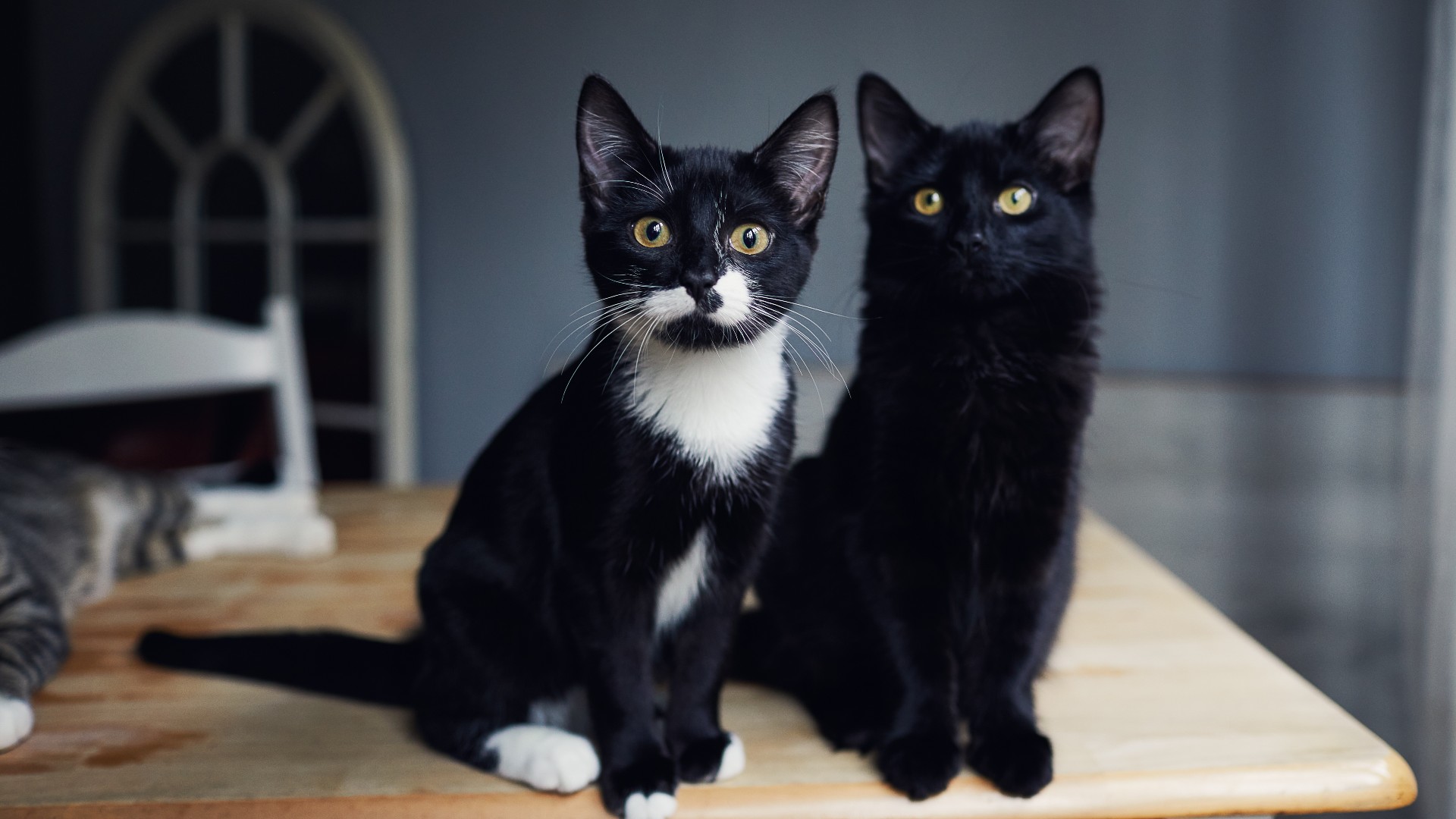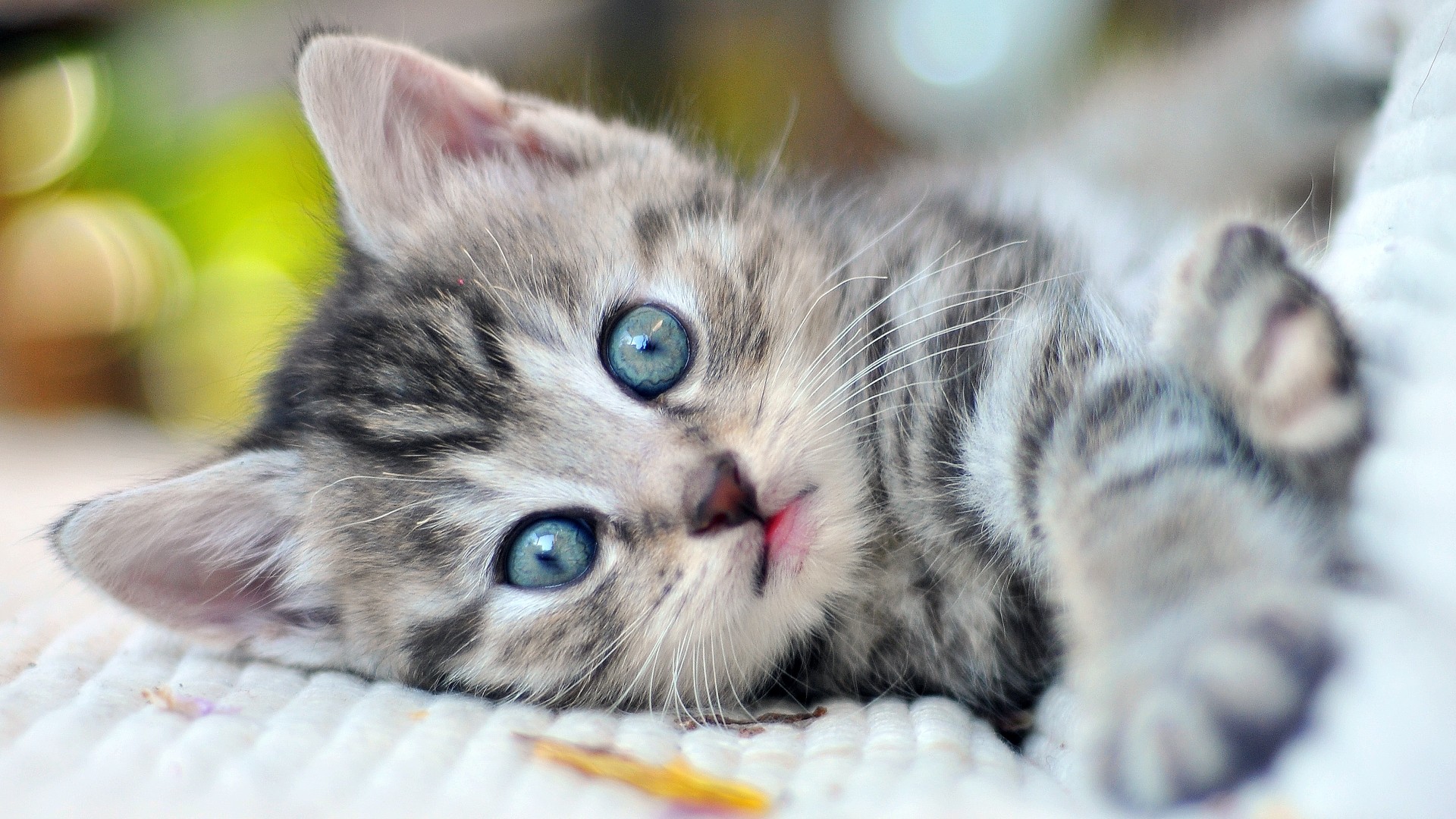How to tell a cat’s age: A vet’s guide
If you’re adding a new cat to your family, you’ll want to know how to tell a cat’s age - we reveal what to look out for

Knowing how to tell a cat’s age is an important skill for anyone who’s considering a new feline friend. After all, you can’t determine the best cat food for your feline without knowing your cat’s approximate age, because each feline life stage has unique nutritional needs.
Additionally, vaccine guidelines and other medical matters will vary depending on the age of your bundle of fluff.
Estimating a cat’s age isn’t always a simple matter. Kittens are relatively easy to age, while adult cats can prove more challenging. Although a veterinarian is always your best resource for estimating a cat’s age, understanding feline aging guidelines can help you estimate how old your cat may be.
Estimating a kitten’s age
When adopting a kitten, it’s important to accurately estimate the kitten’s age. Your kitten’s age will play a role in diet, vaccine schedules, spay/neuter timing, and what behaviors you should expect from your kitten.
There are two basic ways to estimate a kitten’s age: dental development and weight.
Dental development in kittens tends to follow a specific pattern. In general, dental milestones in kittens include:
- 3 weeks old: The deciduous teeth (baby teeth) begin to come in, beginning with the incisors (small teeth in the front of the mouth). Once the incisors are fully in, the deciduous canines (“fangs”) and then premolars will come in.
- 6 weeks old: All deciduous teeth have come in.
- 10-12 weeks old: The deciduous incisors begin to fall out, beginning with the incisors, and they are replaced with larger permanent teeth.
- 5 months old: All of the deciduous teeth have been lost and the kitten has a full mouth of adult teeth.
While these times are not set in stone and variation may occur, dental development can be a helpful way to estimate the age of a kitten. For example, a kitten with all of their deciduous incisors but no canines or premolars is likely just 3-4 weeks old. In contrast, a kitten with a full mouth of deciduous teeth is likely 6-10 weeks old.
Get the best advice, tips and top tech for your beloved Pets
A kitten’s weight can also serve as a helpful age indicator. Until they reach five months old, most kittens gain approximately one pound per month. Therefore, a one-pound kitten is probably one month old, a three-pound kitten is approximately three months old, and so on.
For the most accurate estimate of your kitten’s age, evaluate your kitten’s teeth and body weight. Hopefully, the two methods will agree. If you receive differing estimates, you can average the two numbers for a reasonable estimate of your kitten’s age.

Estimating the age of an adult cat
Aging an adult cat is more challenging, because adult cats no longer follow clearly-defined developmental steps like kittens.
One way to estimate an adult cat’s age is by looking at the teeth. In general, clean teeth indicate a young adult, while heavy tartar development suggests that a cat is older. However, differences in genetics and diet can make this method unreliable. Your veterinarian can also perform a thorough eye exam, looking for aging changes in the lens of the eye.
While determining an exact age in an adult cat may be challenging, a veterinarian can often help you narrow down your cat’s age to a range of several years. Even an approximation is beneficial, because senior cats differ in their dietary and training requirements from younger cats.
If your veterinarian determines that your cat is a geriatric cat, for example, you can focus your attention on how to litter box train an older cat and what should I feed my older cat.
In contrast, caring for a young adult requires attention to different aspects of feline health.
How to tell the age of a female cat
When you’re faced with a female cat of unknown age, where should you start?
First, determine whether you are dealing with a kitten or an adult cat. A kitten often weighs less than six pounds and may still have deciduous teeth (which are smaller than adult teeth). If you are dealing with a kitten, you can use weight and dental development to estimate the cat’s age.
In the case of an adult cat, a veterinarian’s help may be needed to make an accurate age assessment.
How to tell the age of a male cat
There are no significant differences in the rates at which male and female cats develop. Male cats are aged just like females. Kittens are aged on the basis of their dental development and weight, while adult cats are aged based on their dental tartar accumulation and aging changes in the lens of the eye.
Can you tell a cat’s age in human years?
Once you have determined your cat’s age, you can convert that age to human years.
- 1 year old cat: 15 human years old, or an adolescent
- 2 year old cat: 24 human years old, or a young adult
- 3 year old cat: 28 human years old
- 4 year old cat: 32 human years old
While the first two years of a cat’s life are equivalent to 24 human years, feline development slows after two years old. From then on, one year of feline life is equivalent to four human years. For example, a 10 year old cat is approximately 56 years old in human years. (Add 24 human years for the first two years, plus four human years for eight additional years: 24 + 32 = 56 human years old.)
While converting your cat’s age to human years isn’t essential, it can be a helpful way to think about your cat’s life stage. This conversion can help you determine whether your cat is the equivalent of a child, a teenager, an adult, or a geriatric individual, helping you better understand their personality and their needs.
Summary
Knowing how to tell a cat’s age can be useful in a variety of contexts. If you adopt a cat of unknown history, an accurate life stage estimate can help you provide the best possible care. Kittens can be aged with relative accuracy using body weight and dental development, while aging adult cats may require the help of a veterinarian.
Want to learn more about felines? Check out our favorite interesting cat facts.
Dr. Barnette is a graduate of the University of Florida, where she received both her B.S. in Zoology and her Doctor of Veterinary Medicine (DVM). She has 15 years of clinical experience as a small animal veterinarian, treating dogs, cats, and occasional exotic patients. She now works as a freelance veterinary writer, creating educational content for veterinarians, veterinary team members, and dedicated pet owners. Dr. Barnette lives in southwest Florida with her husband and daughter (plus two cats, a dog, and a rescued dove!) and enjoys kayaking, biking, and hiking. Learn more about Dr. Barnette at www.linkedin.com/in/catherinebarnette.

